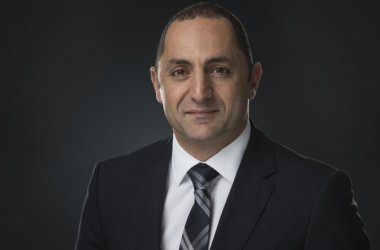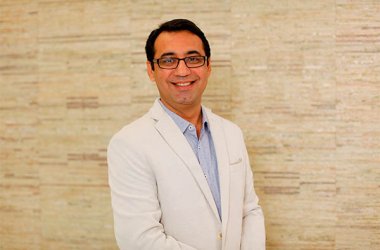
Shankar heads the largest IT distribution business in the region. At close to Dollar Two billion, Redington Gulf has the highest top line revenue, the largest number of vendor partners and the broadest geographical reach amongst all regional channel players. It operates in 14 country markets, offers channel partners products and solutions from over 30 vendors and has logistical facilities in over 10 countries. A discussion on multiple facets of their regional business model and vision.
With rapidly changing business models in the region and across technologies, how would you describe Redington Gulf’s forward looking vision?
Shankar: Redington would like to position itself as an emerging markets supply chain services provider, participating in different verticals of the business. Of course IT has been the predominant vertical of the past, but may not necessarily be into the future. Unlike conventional wisdom where in aggregation you create value, we believe that in disaggregating the supply chain you can actually unlock greater value. This is our vision statement.
What is your approach in the emerging markets?
Shankar: We are a supply chain services provider in the emerging markets. As a group Redington is present in India, the Indian sub continent including Sri Lanka, Bangladesh, Maldives operating out of Singapore and METACIS or what is called Middle East, Turkey, Africa and CIS countries. If you take the emerging part of the story, in India we are a leading player by far with almost equitable business between us and Ingram Micro. For Sri Lanka, Maldives, Bangladesh, it has been a three-four year journey but we are definitely a strong up and coming distributor.
For last five consecutive years we have managed to keep leadership position in Middle East and Africa. The acquisition of Arena late last year, the second largest distributor in Turkey, has definitely helped us to cover a good part of our footprint. This leaves us the largely untapped and unexplored markets of North, Central and Southern Africa and CIS countries. In terms of priority, we are first addressing Africa and over time CIS countries.

In your vision statement, you mentioned the reverse disaggregation approach to supply chain management. How does this generate value for you?
Shankar: We have broken the supply chain into four blocks: distribution, logistics and warehouse services, financial services and post sales support services. Hence we call ourselves a supply chain services provider and not just a supply chain manager.
Redington participates in the supply chain from end to end. In a way of speaking, we are a DHL or FedEx and a GE Commercial Capital or a bank and a service provider all rolled into one. We are a three in one and this for a customer is a good suite of services. Hence we are a supply chain services provider participating in emerging markets across different verticals and by disaggregating we try to create value.
You mentioned IT is one of the vertical market segments in your forward looking business model. What are the other areas?
Shankar: While it is true that IT has been a big vertical for us in the past, to some extent in the Middle East and Africa, but today we are in the telecom space in India. We distribute the Blackberry in this part of the world and in Africa we distribute Nokia. In India we are going into consumer durables distribution, we are into gaming and we distribute the Xbox from Microsoft in India. We are into distribution of lifestyle products largely Apple – iPod, iPad, MacPC and we distribute the digital printing press from Indigo.
We are an IT distributor, but we do not want to be branded as an IT distributor. There is nothing wrong or right about it, it is just that our model is different.
Being a value added distributor has become a fashionable term today. Yet when Redington created the division it was not even an established way of business. What prompted you to go down the value route?
Shankar: In the past we started like any trader or distributor dabbling with products that have a good sales velocity and we were on the volume side of business. Little more than four to five years ago we said to ourselves, for this company to evolve and transform itself it is important for us to become a value added distributor. This is something we had already initiated in India in the late nineties.
We told ourselves, five years ago, why not look at the value added distribution space. This is something where we see an opportunity with not too many players. A few system integrators and a few players were focussed on pockets of opportunity like security and networking. It was a struggle for us. Many value vendors would look at us and say: Hey, you are a broadliner! How do we know you have the capacity to do value added distribution?
Till we got the brand it was difficult to prove and without proving yourself the vendors would not give you their brand. Finally we did crack it to the full credit of Ram Kumar and his team. Now we have built a portfolio of brands in both the volume and value space. In India we have ninety brands and here in Middle East and Africa we are relatively impoverished, with one third the number of brands as in India.
What is the scale of your investment in logistics and warehouse services?
In Dubai we have a distribution centre that is 100,000 sq feet with a stackable height of 16 metres and 25 loading bays. We have another automated centre in Chennai in India with Calcutta, Delhi and Mumbai to follow. Being in the supply chain, it is important to have our factory and warehousing. In India we have godowns but not warehouses and in the Middle East we have warehouses but not distribution centres.
By creating logistic centres, a good part of which is used for captive consumption, there is another portion with which we can engage in third party logistics services. What we can do for ourselves, we can also do for vendors. This can be another income stream.
In current times of slow cash liquidity in the channel, how do you manage large government and corporate deals with extended terms of credit?
Shankar: In India we have set up a non banking finance company, where we do what is called trade finance. The same partners who want to buy products are constrained by 30 to 45 days of credit from Redington or any other distributor. Sometimes when you are selling to a large corporate or government, they would have a longer capital working cycle, however the partner’s balance sheet is not bankable.
Banks are not willing to support them with working capital, or if they give them they would want many times the loan value as collateral and they are not able to provide the collateral. We thought to ourselves why not try to get into this business. We know the customer – who is credit worthy and for how much. They could even buy the product from competition, but we could do the financing. But that is a business and we are not giving the finance interest free.
We have been into this business for three and half years and for three years we have been profitable from day one. Our non performing assets are zero. When you give 30 to 45 days credit you get 0% interest. But when you give cash they are ready to pay interest because they get working capital.
What is the scale of your investment in support services?
Shankar: In India we have 350 repair service centres and in Middle East and Africa we have over 40 repair service centres. Our ability to do warranty and out of warranty support and annual maintenance contracts gives us another opportunity to provide services to the customer.
Your core team is spread across multiple counties with different mind sets, cultures and value system. How do keep them cohesive?
Shankar: You will find this very different about Redington. We are a very people driven company. We have professionals who come into the business and think and behave as entrepreneurs. They think and behave as if this was their own company and business. Hence we call them as intrapreneurial.
What is your perception on the regional IT vendor dynamics and the need for channel partners to adapt accordingly?
Shankar: Lots of vendors today are facing huge pressures. There was a time when business was in motion, but today there is huge pressure. A few years ago the top five vendors would have contributed north of 70% of the total PC business, with 25% to 30% coming out of all the remaining brands. The same story today, my tummy tells me, is about 50%. What has really happened? There are too many brands in the fray and not necessarily the ones who are leading the pack are the ones continuing to take big strides.
The ones who were otherwise called tier-two brands are suddenly gaining traction, because of their ability to take Middle East as a focus market, price aggression, offering, I don’t know! Initially some of the distributors would prefer not to carry these brands. Now these are the same distributors, Redington included, who are saying: Hey we should not shy away from signing up these guys, because there is definitely a momentum.
Is there a learning point here?
Shankar: It is not necessarily small is beautiful and big is too big to fail. This is a classic case where big is under pressure, not able to grow and growth is all taken up by tier-two guys who are now coming to the fore, in my scheme of things.
====================================
Vendor profile
Systems: Acer, Asus, Dell, Fujitsu, HP, Lenovo, Packard Bell, Samsung, Sony, Toshiba
Software and security: Checkpoint, Symantec, Trend Micro, Red Hat, SonicWall, HP
Peripherals and storage: Acer, Canon, Epson, Fujitsu, HP, Imation, LG, Samsung, Packard Bell, Sandisk, Western Digital, Seagate, APC, HP Servers and Storage, Fujitsu Storage, Tripp-Lite
Networking: Avaya, Aastra, Cisco, LifeSize, HP Networking
Accessories and consumables: Epson, Canon, Samsung, HP
Services and training: Acer, Dell, Canon, Fujitsu, IBM, HP, Nokia, Toshiba
Others: Molex, Nokia phones





